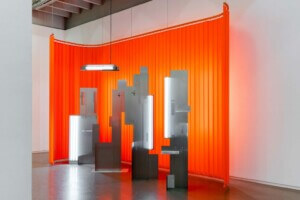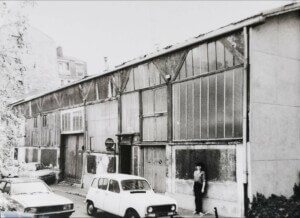| Brought to you by: |
Ductal concrete technology used for the architect’s shapely “icebergs” in Paris
Frank Gehry has referred to his design for the Louis Vuitton Foundation for Creation, a new home for the contemporary art collection of LVMH mogul Bernard Arnaud, as “a veritable ship amongst trees.” The project, located at the northern entrance of Paris’ Bois de Boulogne near the Jardin d’Acclimatation, hasn’t been without its share of controversy and delays, but the nearly 130,000-square-foot, 150-foot-tall building is moving ahead and is slated for completion in 2012. Though a hovering glass carapace will enshroud the museum, models of the design show the sails parting at various points to reveal concrete “icebergs” that form the building’s core. Since 2006, building material manufacturer Lafarge has been working with the building’s project team, prototype designer Cogitech Design, and precast concrete manufacturer Bonna Sabla to realize the design with Lafarge’s Ductal ultra-high performance concrete (UHPC).
- Fabricators Lafarge Ductal, Cogitech Design, Bonna Sabla
- Architect Frank Gehry
- Location Paris, France
- Status Estimated late 2012 completion
- Material Ductal concrete
- Process Moulage Sous Vide (MSV)
The Foundation’s concrete facade will require 16,000 exterior wall panels, each with its own geometry to match the curves of the nearly 97,000-square-foot glass facade. Because producing each panel individually was technically and financially unfeasible, Lafarge partnered with Cogitech and project management consortium RFR/TESS to develop a unique vacuum-casting process. The technology combines a flexible mold that can take on any curvature determined by a 3-D model with a master polystyrene template machined to the desired panel geometry. Named Moulage Sous Vide (MSV), it was patented by Lafarge in 2008 and has since won two innovation awards from the French Concrete Industry Federation.
Using the MSV process, Bonna Sabla produced several prototypes, ultimately manufacturing 400 panels with identical dimensions, but completely unique curvatures, that were installed in a full-scale first run model at the building site in September 2010. The company began industrial production of the 16,000 panels this spring.
“Our main challenge lay in keeping the mold sufficiently rigid, whilst retaining the suppleness needed to guarantee the exactness of the geometric forms, in conformity with the demands from the project managers,” said Patrick Mazzacane, Director of the UHPC Division at Bonna Sabla, in a release. “We optimized the vacuum molding process, in order to be able to use this during the industrial manufacturing phase.”
After undergoing the MSV process, each Ductal panel is cured for 20 hours, then mapped to produce a 3-D report of its shape and ensure it is within 1 millimeter tolerance. The 35-pound segments are approximately 4.9 feet long by 1.3 feet high, and less than an inch thick. Because no two are alike, they are cast with a number and a radio frequency ID chip to ensure each can be traced throughout the installation process, which began this spring, and for maintenance in the future.










